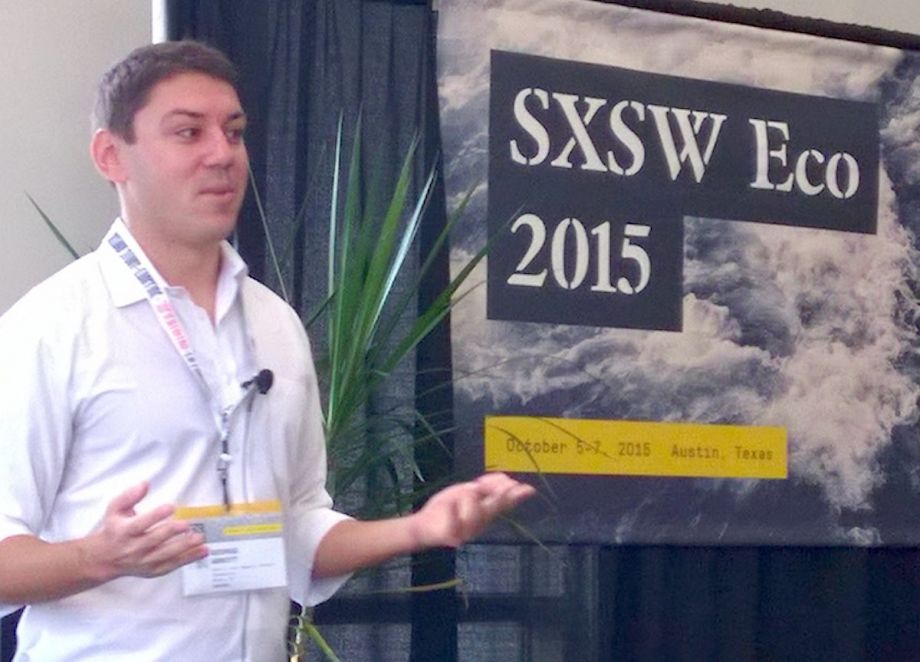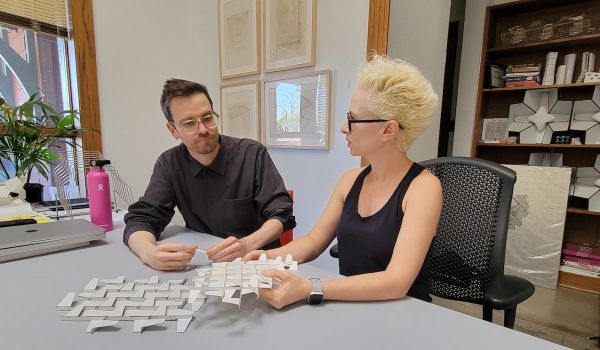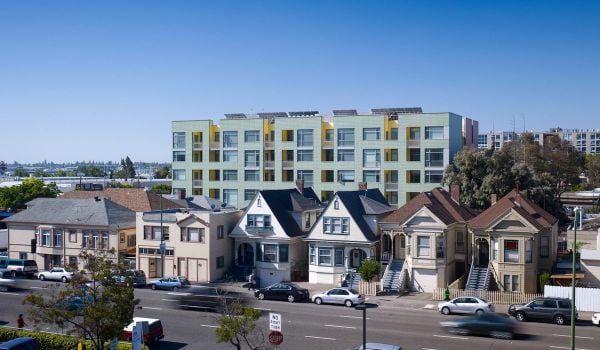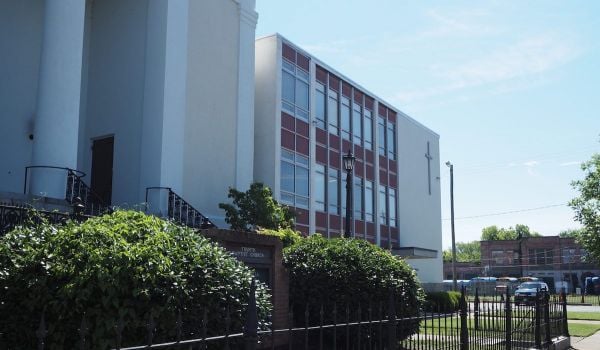I can’t honestly say which was most exciting at this year’s SXSW Eco conference in Austin: the thought of traveling at the speed of sound in a tube, or extracting minerals from asteroids. Add workshops and competitions — and the spectacle of flying bats — and you have the fifth annual gathering of business leaders, investors, innovators and designers who are working on solutions-centric global change. More simply put, we all got a glimpse of our future potential. (Next City was a SXSW Eco media partner.) Here, the five best things I saw.
1. Design guidelines for civic engagement can make a difference. With generous funding from the John S. and James L. Knight Foundation (which also funds Next City), the Center for Active Design received a $1.8 million grant to implement its Design Guidelines for Robust Engagement. Originally printed in 2011, the guidelines are an effort to understand the influence of place-based design on civic engagement. Citing health statistics (for example, physical inactivity has replaced smoking as the leading cause of preventable death in the world), Center Director Joanna Frank provided social, economic and environmental rationales for better design. How to measure the impact, though, is key. Frank and George Abbott from the Knight Foundation led workshops to help urbanists better understand a common vocabulary and the many different ways to implement the change we seek.
2. Hyperloop is coming. Anticipating that the arterial lines of most cities will implode over the next decades, Dirk Ahlborn from Hyperloop Transportation Technologies took us on a ride of the future to explore how an advanced people-mover system that travels at the speed of sound can transform mobility and land uses. With crumbling infrastructure and energy challenges, growing urban centers are buckling under the weight of their commuters. Contemplating a metro system that connects major cities in the U.S. through Hyperloop, Ahlborn made a strong case for an interregional system. “Impossible enough to be possible” became the rallying cry. With investors like Elon Musk and a pilot project expected to break ground next year at Quay Valley, California, could this be the transportation system of the future? Funniest question of the day: “Why on earth would anyone want to go from San Francisco to Los Angeles?”
3. Architects and planners must focus on empowering communities. SXSW Eco’s public space design competition celebrated projects that achieve a positive social and environmental impact through the creation or re-imagining of the built environment. This year, the competition was spread across five categories: data and tech, resilience, social impact, urban strategy, and art and interaction. As a judge for the urban strategy ideas, I saw creative thinking applied to the transformation of over 20 vacant lots in Milwaukee into sustainable pocket parks and orchards, by Home Gr/Own. (They took the prize.) Leadership from the City of Milwaukee’s Office of Environmental Sustainability and concerned citizens proves that partnerships are key. Fellow jurist Carol Coletta from the Knight Foundation reminded all of us that the power to vote is essential to creating a higher quality of life. Finding ways to design civic spaces that remind us of this privilege as well as encourage greater civic participation is the imperative for architects and planners. Kudos to the Autodesk Foundation for their support of this competition.
4. Thinking through the spatial implications of smart cities. Austin Ashe from GE Lighting, Anica Landreneau, of design firm HOK, and Kinder Baumgardner, of SWA, a landscape architecture firm, presented designs of the future in place today. Increased urbanization is putting greater demands on cities for energy, water and other infrastructure. Climate and culture sensitivity add to the challenge. Baumgardner postulated that autonomous cars will reduce the need for highway lanes and parking spots, freeing up space and resources for natural interventions. Could today’s parking garage be tomorrow’s vertical garden or art installation? My concern is that autonomous cars might siphon off enough users to bankrupt a number of marginal mass transportation systems in select cities.
5. Inspiration matters. As CEO of nonprofit D-Rev, Krista Donaldson and her colleagues have designed, built and marketed an $80 knee that will provide mobility options for millions. Currently, 9.5 million out of 10 million amputees lack prosthetic devices. And, thanks to enhanced lighting technology, babies with jaundice will survive and thrive around the world at greater rates than ever before. Donaldson stressed that to create is our high privilege, and encouraged all to embrace the truth and conscience of our work. She recommended that every company have a designer on staff. Amen!

Tom was president, CEO and publisher of Next City from May 2015 until April 2018. Before joining Next City, he directed the Center for Resilient Design at the College of Architecture and Design at the New Jersey Institute of Technology. Prior to that, he ran the Regional Plan Association’s New Jersey office, and served as a senior adviser on land use for two New Jersey governors. Tom is a licensed professional planner, and a member of the American Institute of Certified Planners, as well as an adjunct professor at the New Jersey Institute of Technology, where he teaches land use planning and infrastructure planning.

















